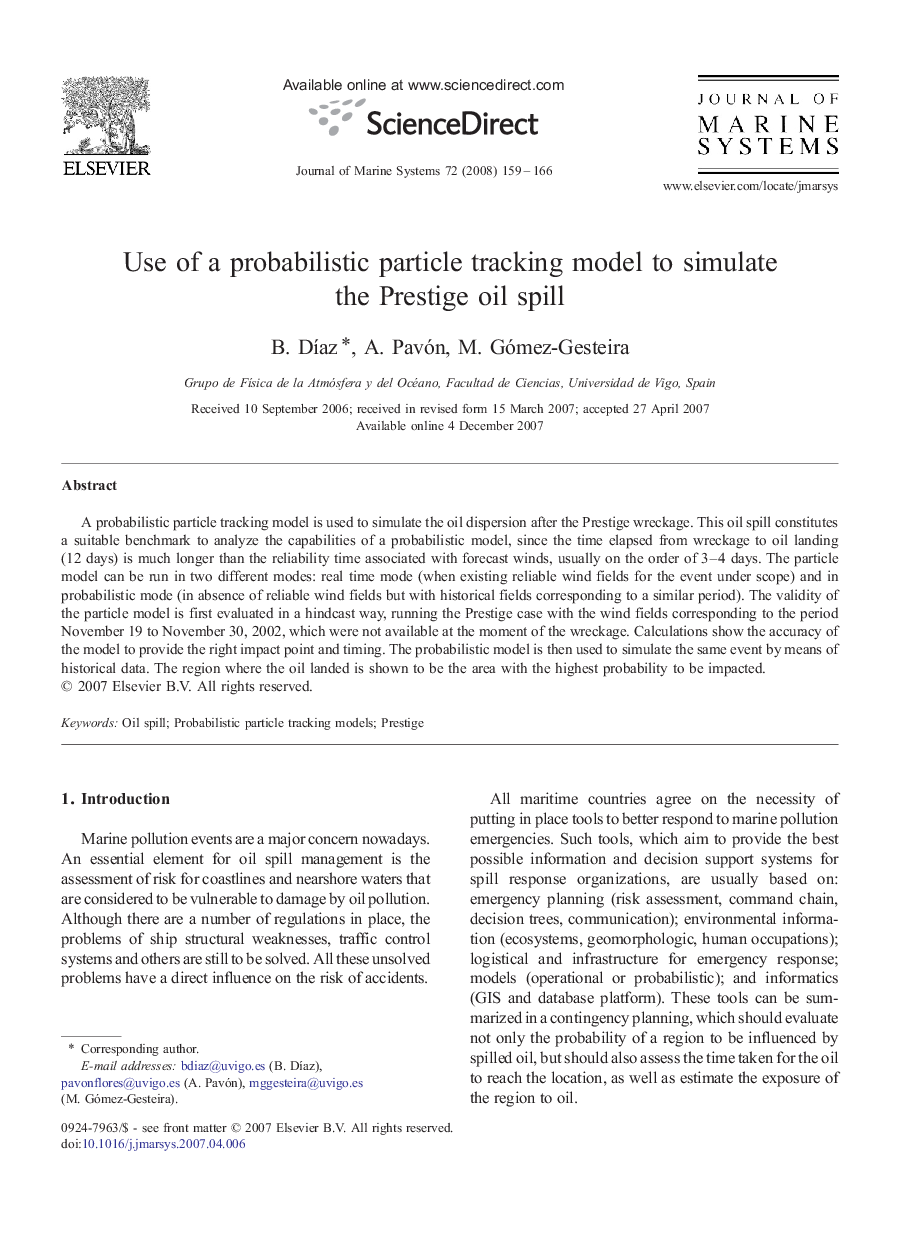| Article ID | Journal | Published Year | Pages | File Type |
|---|---|---|---|---|
| 4548834 | Journal of Marine Systems | 2008 | 8 Pages |
Abstract
A probabilistic particle tracking model is used to simulate the oil dispersion after the Prestige wreckage. This oil spill constitutes a suitable benchmark to analyze the capabilities of a probabilistic model, since the time elapsed from wreckage to oil landing (12Â days) is much longer than the reliability time associated with forecast winds, usually on the order of 3-4Â days. The particle model can be run in two different modes: real time mode (when existing reliable wind fields for the event under scope) and in probabilistic mode (in absence of reliable wind fields but with historical fields corresponding to a similar period). The validity of the particle model is first evaluated in a hindcast way, running the Prestige case with the wind fields corresponding to the period November 19 to November 30, 2002, which were not available at the moment of the wreckage. Calculations show the accuracy of the model to provide the right impact point and timing. The probabilistic model is then used to simulate the same event by means of historical data. The region where the oil landed is shown to be the area with the highest probability to be impacted.
Related Topics
Physical Sciences and Engineering
Earth and Planetary Sciences
Oceanography
Authors
B. DÃaz, A. Pavón, M. Gómez-Gesteira,
